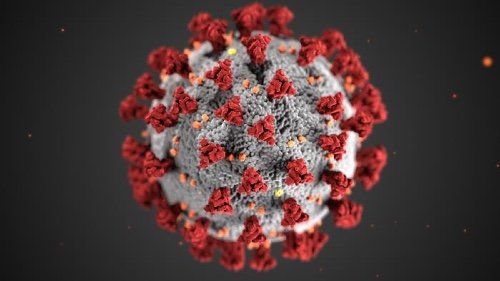A Post-COVID-19 Plan from a Rad Department on the Leading Edge
The University of Washington saw the first COVID-19 cases, now they have designed a plan for re-emerging.

As many states continue a phased re-opening after the national shutdown for COVID-19, radiology departments across the country are also outlining plans to begin offering non-emergent imaging services again.
The University of Washington (UW) saw the first patients identified with the COVID-19 virus, putting them at the forefront of the outbreak. Now, in an article published May 22 in the Journal of the American College of Radiology, a team, led by Mahmud Mossa-Basha, M.D., associate professor and attending neuroradiologist, has detailed steps they have taken to re-engage patients.
“It is important for radiology departments to maintain and improve upon the precautions and workflows that have been implemented,” Mossa-Basha’s team wrote. “A slow ramp-up of outpatient imaging would better ensure these protections, as would innovative approaches to reduce potential exposures, and improved patient communication about precautions that are being taken in order to restore patient confidence.”
It is imperative after resuming elective imaging, the team added, that departments, practices, and imaging centers conduct two-week assessments of all hospital-related exposures and community infection rates. Doing so will ensure they can continue to provide elective services safely. All providers and staff must continue to wear appropriate personal protective equipment, maintain proper social distancing, and frequent testing.
For radiology, in particular, they noted, distance between workstations in reading rooms should be maximized, and home interpretation should be implemented whenever possible. Single workstation reading rooms are preferable, if feasible.
New Safety Protections
A return to a full imaging workload does not mean a return to imaging “as usual,” the team stressed. Instead, protecting patients will mean implementing some novel approaches in the daily workflow. The changes they have implemented include:
- An automated text message system allows patients to both register online and alert the department when they have arrived for their appointment. The same system can tell a patient when to enter the building for his or her study.
- Waiting rooms have been re-organized, chairs have been removed to ensure proper 6-foot social distancing, and tape on the floor marks sufficient distance between the waiting room chairs and the front desk.
- Staggered appointments between modalities minimize the number of patients present at any given time.
- The department has turned all hallways into one-way passages to reduce exposure.
Appointments of Growing Urgency
When elective imaging halted in mid-March, many studies, including exams for cancer therapy and some diagnosis, were considered safe to delay. Now, those procedures have become time sensitive, the team said, and certain precautions must be taken:
- All patients undergoing aerosol-generating procedures will be moderately sedated and could be intubated or have open suction.
- Symptomatic patients receive the 2-hour RT-PCR test before undergoing emergent aerosol-generating procedures. Those testing positive will have procedures deemed sufficiently emergent completed under airborne/contact precautions.
- Symptomatic patients who cannot wait for test results will have their procedures completed under standard airborne/contact precautions.
Imaging Access Increases
Prior to COVID-19, radiology's goal was largely to increase imaging throughput. Now, the goal, according to the team, is increasing the gap between studies to allow for 10-15 minutes of appropriate cleaning time, the alleviate the strain on waiting rooms and hallways, and increase patient confidence in the safety of the radiology department. To reach this goal, the team recommended:
- Extending imaging operation times into evenings and weekends.
- Shortening scanning block times, especially on MRI and CT, to allow for adequate cleaning. UW shortened CT blocks to 15 minutes via streamlined, efficient workflows, and MRI blocks to 15 minutes for most commonly performed exams, including brain and spine protocols. By consolidating five brain MRI protocols, they truncated scan time from up to 30 minutes to 8.5 minutes. Other MRI scans hover around 30 minutes.
Patient Communication
Recent surveys have indicated that most patients are too nervous to enter a hospital in the current environment – even for needed medical care. An April Revive Health survey found only 15 percent of patients would feel comfortable entering a hospital right after stay-at-home order lifted, and 56 percent revealed they fear getting sick from other patients.
And, while another survey indicated 81 percent of patients trust their healthcare professionals, only 30 percent were happy with the level of communication they had received from their healthcare systems regarding the pandemic. This is where UW has made significant use of its texting system.
“UW has adopted our patient texting system to communicate to patients the precautions we are taking in radiology to protect them from exposures,” Mossa-Basha’s team wrote.
These details included universal masking, hand hygiene, and social distancing. They are also detailing these precautions in both email and standard mail, as well as placing signage around the radiology department.
Ultimately, the team said, these measures are critical to the continued ability to re-engage with non-emergent imaging.
“In the post-COVID environment,” they said, “patient and healthcare employee protections from potential exposures should be maintained to uphold the progress that has been made.”
The Reading Room Podcast: Emerging Trends in the Radiology Workforce
February 11th 2022Richard Duszak, MD, and Mina Makary, MD, discuss a number of issues, ranging from demographic trends and NPRPs to physician burnout and medical student recruitment, that figure to impact the radiology workforce now and in the near future.
Strategies to Reduce Disparities in Interventional Radiology Care
March 19th 2025In order to help address the geographic, racial, and socioeconomic barriers that limit patient access to interventional radiology (IR) care, these authors recommend a variety of measures ranging from increased patient and physician awareness of IR to mobile IR clinics and improved understanding of social determinants of health.










